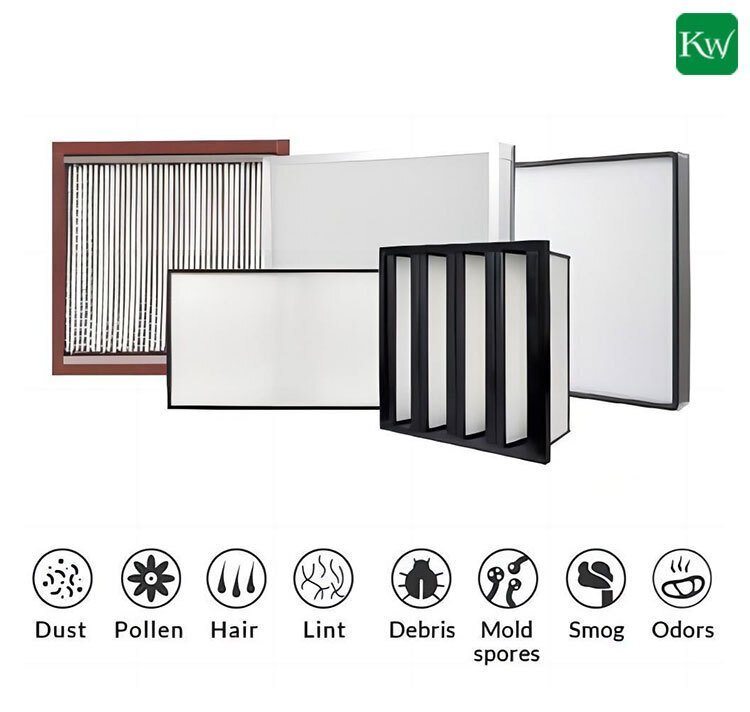Achieving Clean Environments: The Role of Cleanroom Air Filtration Systems
- 2024-01-23
- View 10
Cleanrooms are critical environments utilized in various industries, including pharmaceuticals, biotechnology, electronics, aerospace, and healthcare, where maintaining stringent contamination control is essential Cleanroom air filtration systems play a pivotal role in ensuring the integrity of these controlled environments. In this article, we will explore the significance of cleanroom air filtration systems, their functioning, benefits, and the importance of selecting the right system to achieve optimal cleanroom performance.

Understanding Cleanroom Air Filtration Systems
Cleanroom air filtration systems are sophisticated setups designed to purify the air within controlled environments. These systems employ High-Efficiency Particulate Air (HEPA) and Ultra-Low Penetration Air (ULPA) filters to remove particles and contaminants, ensuring that the air inside the cleanroom meets specific cleanliness standards. By controlling airborne particulates, cleanroom air filtration systems safeguard sensitive processes, products, and personnel from potential contamination.
How Cleanroom Air Filtration Systems Work
Cleanroom air filtration systems operate using a multi-stage process:
Pre-Filtration: The process begins with pre-filtration, where larger particles are captured by coarse filters, preventing them from reaching the more delicate HEPA or ULPA filters.
HEPA/ULPA Filtration: After passing through the pre-filters, air enters the main filtration stage, where HEPA or ULPA filters effectively capture particles as small as 0.3 microns with high efficiency, removing over 99.97% of airborne contaminants.
Air Circulation and Diffusion: Filtered air is then evenly distributed throughout the cleanroom using ventilation systems to maintain uniform air quality.
Continuous Monitoring: Cleanroom air filtration systems are equipped with sensors that continuously monitor air quality. If the filters become saturated or airflow is compromised, alarms are triggered, signaling the need for maintenance or replacement.
Benefits of Cleanroom Air Filtration Systems
Contamination Control: Cleanroom air filtration systems prevent particles and contaminants from entering the cleanroom environment ensuring products and processes remain free from contamination.
Maintaining Cleanroom Standards: These filtration systems help cleanrooms meet their required ISO classifications, such as ISO 14644-1, ensuring compliance with industry regulations and guidelines.
Enhanced Product Quality: By maintaining a pristine environment, cleanroom air filtration systems contribute to improved product quality and reliability, reducing the risk of defects and ensuring customer satisfaction.
Worker Safety and Health: Cleanroom air filtration systems protect personnel working in cleanrooms from exposure to harmful airborne particles, creating a safer working environment.
Selecting the Right Cleanroom Air Filtration System
When choosing a cleanroom air filtration system, several factors should be considered:
Cleanroom Classification: Select a system that aligns with the required ISO classification of the cleanroom.
Air Change Rate: Consider the required air change rate to ensure efficient removal of particles and contaminants.
Filter Efficiency: Choose HEPA or ULPA filters with appropriate efficiency ratings to meet the desired cleanliness level.
System Customization: Opt for systems that offer customization options to meet specific cleanroom requirements and layout.
Energy Efficiency: Select energy-efficient systems to minimize operational costs while maintaining high performance.
Conclusion
Cleanroom air filtration systems are vital components in maintaining controlled environments with strict contamination control. By utilizing advanced filtration technology, these systems effectively remove particles and contaminants, ensuring the integrity of cleanrooms and safeguarding critical processes and products. When selecting a cleanroom air filtration system, it is crucial to consider factors such as cleanroom classification filter efficiency, and system customization to achieve optimal cleanroom performance and compliance with industry standards.
FAQs
Q1: What is the primary difference between HEPA and ULPA filters?
HEPA filters capture particles as small as 0.3 microns with an efficiency of over 99.97%, while ULPA filters have higher efficiency, capturing particles as small as 0.12 microns.
Q2: Can cleanroom air filtration systems eliminate all contaminants from the air?
Cleanroom air filtration systems significantly reduce airborne contaminants but may not eliminate all microscopic particles. However, they help maintain the required cleanliness level for specific cleanroom classifications.
Q3: How often should filters in cleanroom air filtration systems be replaced?
Filter replacement frequency depends on factors such as filter type, usage, and the cleanliness requirements of the cleanroom. It is typically recommended to follow the manufacturer's guidelines for filter replacement.
Q4: Can cleanroom air filtration systems be installed in existing cleanrooms?
Yes, cleanroom air filtration systems can be installed in existing cleanrooms. Proper planning and integration with the existing HVAC system may be necessary for seamless installation.
Q5: Do cleanroom air filtration systems contribute to energy savings?
Yes, many modern cleanroom air filtration systems are designed for energy efficiency, helping to reduce operational costs while maintaining optimal performance.
Kwang Cleanroom is proud to offer examples of a variety of our cleanroom projects below. ISO Clean Room, Cleanroom Packaging Services, Clean Room Installation, Dust-Free Room, Dust-Free Clean Room Equipment, Pharmacy Clean Room, Hospital Operating Theater Room.
